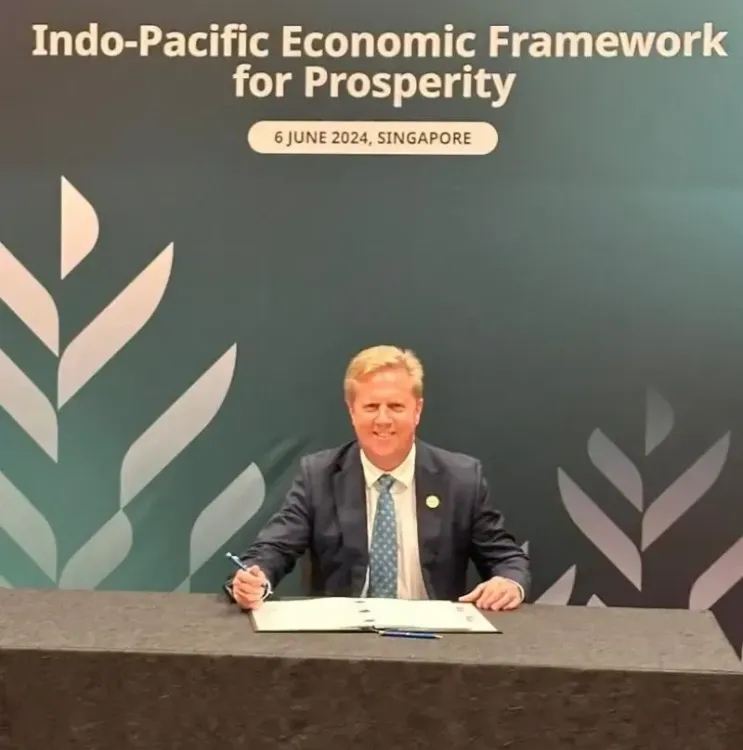Is New Zealand Committing to a 2050 Farm Methane Reduction Target?

Synopsis
Key Takeaways
- New Zealand's target for methane reduction is set at 14-24% by 2050.
- Investment of over NZ$400 million in methane-cutting technologies.
- Focus on processor incentives rather than taxation.
- Legislated review of methane targets scheduled for 2040.
- Commitment to overall net-zero climate goals by 2050.
Wellington, Oct 12 (NationPress) New Zealand has established a target to reduce farm methane emissions by 14-24 percent below 2017 levels by the year 2050. This ambitious goal aims to diminish the impact of climate change while ensuring that agriculture and exports remain unharmed.
Approved by the Cabinet and informed by the 2024 Methane Science Review, this initiative follows comprehensive discussions with the farming community.
Minister of Agriculture, Trade and Investment, Todd McClay, stated, "We are providing a pragmatic and equitable pathway that acknowledges the efficiency of New Zealand’s agriculture, preserves jobs and production, and honors our climate obligations," as reported by Xinhua News Agency.
Climate Change Minister Simon Watts reiterated the government's dedication to achieving overall net-zero climate goals by 2050, emphasizing that agriculture plays a crucial and fair role in this endeavor.
Significant policy adjustments include a scheduled review of the methane target in 2040, the absence of taxes on agricultural methane emissions, and a focus on processor incentives and sector collaborations instead of taxation.
The government is investing over NZ$400 million (approximately $230 million USD) alongside industry partners to innovate technologies aimed at reducing methane emissions, with 11 tools anticipated by 2030 and the first available by 2026.
An on-farm emissions calculator has also been launched, according to McClay.
On October 8, a report highlighted escalating risks to coastal areas and communities as New Zealand's marine environment endures increasing pressures from climate change and human actions.
The Our Marine Environment 2025 report, published by the Ministry for the Environment and Stats NZ, indicates that around 219,000 homes, valued at NZ$180 billion (approximately $103.64 billion), are currently situated in flood-prone regions.
By 2060, around 1,300 coastal homes may be at significant risk of damage due to extreme weather events, according to the three-yearly assessment on the marine environment.
Warming seas and ocean acidification are impacting fisheries and aquaculture, which contribute NZ$1.1 billion (approximately $630 million) directly to the Gross Domestic Product and support over 14,000 jobs.
Moreover, by 2022, 428 non-native marine species had invaded New Zealand waters, with 266 establishing populations, increasing ecosystem stress.
Wetlands, dunes, and native vegetation that serve as buffers against flooding and erosion are also being compromised, according to the report.
Kathryn Stokes, a senior materials scientist at the Building Research Association of New Zealand, emphasized the importance of considering future risks, such as rising insurance costs and maintenance challenges linked to sea-level rise, while many Kiwis cherish living near the ocean.
Shane Geange, a marine advisor at the Department of Conservation, stated, "We cannot solely manage individual species or isolated areas. We need to address climate change and the multitude of pressures our marine environment is facing collectively." Geange advocated for ecosystem-based management strategies to safeguard New Zealand's marine environments.









